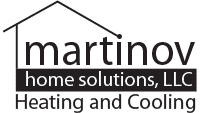September 16, 2019
Categories: Indoor Air Quality
Have you ever stopped to think about the air you breathe inside your home? Most of us spend approximately 90% of our time indoors, yet we rarely consider the quality of the air surrounding us day and night. This is an unfortunate fact, as indoor air quality (IAQ) greatly affects our health.
The air inside our homes can be up to five times more polluted than outdoor air, harboring a cocktail of harmful particles, allergens, and chemical compounds. From the cleaning products we use to the furniture we sit on, countless sources contribute to indoor air pollution. Understanding and improving your home’s air quality can help you protect your family’s health and even create a more comfortable living space.
How Does Indoor Air Quality Affect You?
Since humans breathe anywhere between fifteen and thirty thousand times a day, indoor air quality is important. If you don’t pay it any attention, it can have immediate and long-term effects on your physical well-being, potentially causing a range of health issues, from minor irritations to serious respiratory conditions. Children, elderly individuals, and those with pre-existing health conditions are particularly vulnerable to the negative impacts of poor indoor air quality.
Symptoms of Poor Indoor Air Quality
Is your health sliding? The problem may be as simple as a decline in indoor air quality. Be sure to take action if you notice any of the following symptoms of poor air quality:
- Persistent headaches
- Unexplained fatigue
- Frequent respiratory infections
- Allergic reactions or increased allergy symptoms
- Dry eyes, nose, and throat
- Dizziness or difficulty concentrating
- Skin irritations or rashes
- Recurring coughs or congestion
If any of these symptoms sound familiar, pay close attention to when and where they occur, as this can help identify specific sources of air pollution.
Factors That Lead to Indoor Air Pollution
There are several major indoor air pollutants that impact indoor air quality, including gases, such as radon and carbon monoxide; household cleaners and pesticides; mold and pollen; tobacco smoke; and materials like formaldehyde, asbestos, and lead. It’s helpful to note that many of these pollutants can be exacerbated by humidity, temperature, ventilation, and pets.
Other common sources of indoor pollutants include:
- Household Products: Volatile organic compounds from cleaning products, air fresheners, and even paint stripping can contribute to poor indoor air quality.
- Dust: Dust mites, pet dander, and other pollutants trapped in carpets, furniture, and air ducts can cause a range of problems for your home’s IAQ and your family’s health.
- Moisture and Mold: Excess moisture leads to mold growth, which releases harmful spores into the air.
- Cooking Fumes: Frying or cooking with certain oils can release harmful particles and VOCs into the air.
- Gas Appliances: Gas stoves, natural gas heaters, and other gas appliances emit harmful chemicals like carbon monoxide.
- Outdoor Air Pollution: While outdoor air quality may be good some days, pollutants from nearby traffic or factories can enter your home and affect your health.
- Poor Ventilation: A lack of natural ventilation can trap pollutants, reducing the overall air quality in your home.
- Humidity Levels: Both high and low humidity levels can contribute to air quality issues. High humidity encourages mold growth, while low humidity causes dryness and discomfort.
You should also be aware that the following items can expose you to air pollutants that trigger allergies and other health conditions:
- New furniture
- New mattresses
- New carpet
- New building materials
- Paint and varnish
- An attached garage that stores vehicles
- Fuel-burning heat sources (like wood-burning stoves or kerosene heaters)
- Radon (a ground gas that can enter a home and rise to dangerous levels)
- Dirty air conditioner filters
The Best Ways to Improve Your Home’s Air Quality
Now that you know what can lead to pollution in your own home, it’s time to look at a few key ways to improve indoor air quality:
- Keep Your Floors Clean: Sweeping or vacuuming your floors will often remove the dust, dirt, animal dander, and allergens that are brought into your home.
- Mop Up: Mopping after you’re done sweeping will remove the dust that the vacuum left behind. Make sure to use hot water when mopping.
- Enhance Ventilation: Proper ventilation is crucial for maintaining good air quality. Open windows regularly to allow fresh air circulation, use exhaust fans in bathrooms and kitchens, and consider installing a whole-house ventilation system that filters and exchanges air efficiently.
- Choose Low-VOC Products: When painting, purchasing furniture, or selecting cleaning supplies, opt for low-VOC or VOC-free alternatives. These products release fewer harmful chemicals into your indoor environment.
- Place Indoor Plants Around Your Home: Certain plants like spider plants, snake plants, and peace lilies can naturally filter air pollutants while adding aesthetic value to your home.
- Install a Humidifier: Dry air in the home can irritate your sinuses, increase your chances of getting ill, and worsen allergies. Introducing moisture into the air can soothe your throat and stop dry eyes. Consider installing a humidifier to help you and your family feel more comfortable and improve indoor air quality.
- Invest in Air Purification Systems: Our air purifiers reduce and eliminate bacteria, mold, pollen, and more, improving the air quality in your home.
- Go a Step Further With UV Lights: While these systems don’t filter any air, they can be beneficial in reducing allergens. Our UV light systems help remove pollutants like mold spores in damp areas.
- Tackle Allergens With an Energy Recovery Ventilator (ERV): ERV systems are ducted, whole-house solutions that remove excess humidity from your home. If you have an extra-damp home, ERV systems prevent mold and improve allergic rhinitis symptoms.
In many cases, poor air quality can take years to affect your health. However, taking steps to improve your indoor air quality now may lower your risk for serious health conditions such as lung cancer and help relieve allergy symptoms. So, don’t wait to take action. Start tackling air pollution today!
Breathe Easier With Martinov Home Solutions
Improving indoor air quality doesn’t have to be overwhelming. Whether you need assistance with your HVAC system, air purifiers, or controlling excess moisture, Martinov Home Solutions is here to help homeowners in Akron, OH, and throughout Northeast Ohio. Trust our expert team to assess your home’s air quality, recommend personalized indoor air quality solutions, and help you create a healthier living space. Contact us today to start breathing easier!

